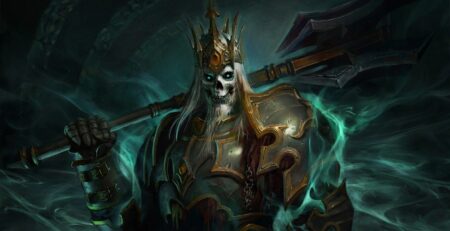
The Radiant Black universe officially launched this February with the Supermassive one-shot, with Rogue Sun following shortly after. It’s a bold expansion after a year of the flagship series, but it’s also one that works as this new universe continues to meld standard superhero and Tokusatsu elements together with ease. Whether you’re a fan of superhero comics, indie comics, or you want to add a new title to your reading list, this series is worth a read – and here are five reasons why.
A Truly Relatable Protagonist
Radiant Black, created by Kyle Higgins and Marcelo Costa, opens with aspiring writer Nathan Burnett hitting a brick wall in his personal life. His career as a novelist has stalled out; he’s been working as a rideshare driver; and to top it all off he’s in massive debt – to the point where he has to move bac in with his parents. Everything changes when one night, Nathan stumbles upon a miniaturized event horizon while out drinking with his friend Marshall. When picking up the event horizon, Nathan gains a superhero costume and the ability to manipulate gravity, and sees it as a way to turn his fortunes around.
The Radiant Black universe is unique in that it presents challenges that people my age would face. Most of us have chased our dreams, only to run into obstacles both financial and emotional. This helps Nathan to become relatable in a way that most heroes from Marvel and DC aren’t; he butts heads with his father over his writing career and grows embarrassed when his mom dotes on him. And an entire issue is dedicated to him attempting to write, showing how tricky the process is.
Organic Worldbuilding

Over the course of Radiant Black Year One, it’s revealed that Nathan is not the only person in possession of a Radiant. Schoolteacher Satomi Sone gained control of one, becoming Radiant Red; she uses her powers to rob banks and comes into conflict with Nathan. Eva, a streamer in Idiana, becomes Radiant Pink. Wendell, the Best Buy employee who she meets while trying to fix her mic, becomes Radiant Yellow. The four are drawn together when a cosmic assassin known as <001> attempts to kill them.
The new Radiants come from different walks of life; Satomi was teetering on the edge due to her husband’s gambling issues; Eva felt stressed due to online duties; and Wendell’s Radiant allows him to see the future – which must take a toll on him. It also helps to diversify the books as Satomi is Japanese-America, Eva is Hispanic, and Wendell is a Black man. Extending to the creative team, Higgins was joined by Cherish Chen on Radiant Black #6 and Meghan Camarena on Radiant Black #12 respectively, which fleshed out Satomi and Eva’s lives. The Radiant Black universe has only continued to grow with the launch of Supermassive, which introduced new heroes Rogue Sun and Inferno Girl Red.
Talking Toku
The Radiant Black universe is also unique in how it draws elements from the Tokusatsu genre of television. Tokusatsu usually delves into genre fare including superheroes and mecha in Japan; this led to shows like Power Rangers and Big Bad Beetleborgs in America. Radiant Black has been described as “Invincible meets Power Rangers.” Rogue Sun combines elements of Power Rangers, Batman Beyond, and Buffy the Vampire Slayer. And the upcoming Inferno Girl Red novel owes a great deal to Kamen Rider.
That influence spreads to the creators themselves. Higgins is best known for his two-year tenure on the Mighty Morphin Power Rangers comic for BOOM! Studios, which Rogue Sun writer/co-creator Ryan Parrott took over; he also co-wrote two Ultraman miniseries for Marvel with Inferno Girl Red writer/co-creator Mat Groom.
30 Years In The Making

When Image Comics first launched 30 years ago, it attempted to launch a shared universe with its titles. But the waning popularity of some titles, along with creators shifting their rights, led to it falling apart. And while other comics at the publisher have launched shared universes – most notably Spawn – the Radiant Black universe has taken off with a fervor that only a few Image titles have matched. Part of that is because it mixes elements that people love about superhero comics, including world-shaking fights and personal drama in and out of costume, with the daring spirit of indie comics. With indie comics, creators don’t have to play to the expectations of established characters – they can form their own rules. And Radiant Black is doing just that.
The Radiant Black universe will only continue to grow, with the Radiant Red miniseries launching next week and Year Two of Radiant Black beginning later this month. I highly recommend you start reading the main series and/or Supermassive, as both are great entry points. They’ll also remind you of the promise of comics – and that promise is something I think we could all use in our lives.



